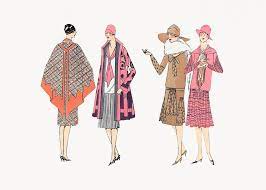Exploring the Role of Fashion Technology
Table of Contents
Introduction
In today’s rapidly evolving world, technology has woven itself into every facet of our lives, including the realm of fashion. Fashion technology, often referred to as “fashion tech,” is a dynamic and innovative field that has transformed the way we design, produce, and experience clothing. In this article, we will delve into the multifaceted role of fashion technology and its impact on the fashion industry.
Design and Creativity
Virtual Prototyping
Fashion technology has revolutionized the design process by introducing virtual prototyping. Designers now use advanced software to create digital prototypes of garments, enabling them to visualize and experiment with various styles, patterns, and color combinations before physical production. This accelerates the design phase and allows for more creative exploration.
3D Printing
One of the most groundbreaking contributions of fashion technology is 3D printing. Designers can now bring their imaginative concepts to life by producing intricate and customized garments using 3D printers. This technology not only enhances creativity but also reduces waste by producing garments with precision and minimal material usage.
Sustainable Practices
Textile Innovation
Fashion technology plays a pivotal role in advancing sustainable practices within the industry. Researchers are developing innovative textiles made from eco-friendly materials such as recycled fibers, organic fabrics, and even materials derived from agricultural waste. These textiles offer a greener alternative to traditional materials and contribute to reducing the fashion industry’s environmental footprint.
Supply Chain Transparency
Through the integration of technology, fashion brands are enhancing supply chain transparency. Consumers can now trace the journey of a garment from its inception to the store shelves. This transparency promotes ethical production practices and allows consumers to make more informed and sustainable purchasing decisions.
Enhanced Shopping Experience
Virtual Fitting Rooms
Fashion technology has transformed the shopping experience by introducing virtual fitting rooms. Shoppers can now try on garments virtually, using augmented reality (AR) technology. This not only provides convenience but also reduces the need for physical try-ons, contributing to reduced store returns and exchanges.
Personalized Recommendations
Online shopping has become more personalized, thanks to fashion technology. Algorithms analyze a shopper’s preferences and browsing history to provide tailored product recommendations. This enhances the shopping experience by helping consumers discover items that align with their style.
Manufacturing and Production

Automation
Automation has streamlined the manufacturing and production processes in the fashion industry. Advanced machinery and robotics are used to cut, sew, and assemble garments with precision and efficiency. This reduces production time, minimizes errors, and lowers labor costs.
Smart Garments
Fashion technology has given rise to the concept of smart garments. These garments are embedded with technology such as sensors, LEDs, and microcontrollers. They can monitor vital signs, adjust temperature, and even change color or pattern based on external stimuli. Smart garments merge fashion with functionality and pave the way for innovative clothing experiences.
Conclusion
Fashion technology is a powerful force that continues to reshape the fashion industry. From revolutionizing design processes and promoting sustainability to enhancing the shopping experience and redefining garment production, its impact is far-reaching. As technology continues to advance, the synergy between fashion and technology will undoubtedly lead to even more exciting and transformative possibilities.
FAQs
What is the purpose of virtual prototyping in fashion technology?
Virtual prototyping allows designers to create digital prototypes of garments, enabling them to visualize and experiment with designs before physical production.
How does fashion technology contribute to sustainability?
Fashion technology promotes sustainability through innovations in textiles, supply chain transparency, and reduced waste in manufacturing processes.
Can consumers customize their own garments using fashion technology?
Yes, 3D printing and other technologies allow consumers and designers to customize garments with intricate details and unique designs.
What is the significance of smart garments?
Smart garments incorporate technology to offer features like monitoring health metrics, adjusting temperature, and responding to external stimuli, merging fashion with functionality.
Is fashion technology only relevant to high-end fashion brands?
No, fashion technology impacts the entire industry, from high-end brands to fast fashion retailers, by improving various aspects of design, production, and shopping experiences.

